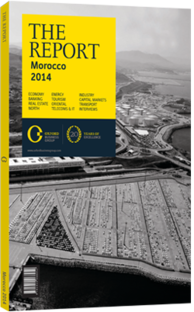From the ground up: Efforts are under way to boost agricultural output
While Morocco’s northern region is an important agricultural producer, benefitting from a fertile location along the Atlantic and Mediterranean coasts, it captures only a small percentage of the sector’s added value. Authorities are working to implement a number of projects under the national agricultural strategy, the Green Morocco Plan (Plan Maroc Vert, PMV), and regional schemes that emphasise the importance of local value-added processing and more efficient production techniques. In 2010 turnover in the sector amounted to Dh7.9bn (€701.5m) in Tangiers-Tétouan and Dh4.84bn (€429.8m) in Taza-Al Hoceima-Taounate, according to the Ministry of Agriculture. The ministry aims to double the value of production in both areas by 2020, to Dh18.07bn (€1.6bn) in Tangiers-Tétouan and Dh9.13bn (€810.7m) in Taza-Al Hoceima-Taounate.
Both regions have sufficient resources and available arable land to support higher production levels. According to 2009 data from the Haut Commissariat au Plan, the Tangiers-Tétouan region includes a total of 283,700 ha of arable agricultural land, of which over one-third is concentrated in the mainly rural province of Chefchaouen. The neighbouring Taza-Al Hoceima-Taounate region, a predominantly rural area whose population relies heavily on agriculture, includes 927,000 ha of arable land, covering 39% of the region’s total surface area. To boost output of key products, authorities are keen to encourage aggregation – the majority of farmers work plots that are 5 ha or less – spread modern techniques and increase light processing to capture more of the value from regional produce.
LOCAL CULTURES: According to the Ministry of Agriculture, the Tangiers-Tétouan region contributes 17% of national olive production and 11% of seasonal fruits and vegetables. The regional also produced 346,000 tonnes of cereals in 2010, accounting for roughly 5% of national production. By 2020, regional authorities aim to more than double annual production of both seasonal fruits and vegetables to 1.78m tonnes and of olives to 647,500 tonnes. The region produced 37,000 tonnes of citrus fruit in 2010, a valuable export crop that has been prioritised under the PMV as a means of boosting export revenue. Production in Tangiers hovers around 2% of the national crop, but authorities aim to increase output to 190,000 tonnes by 2020 by supporting the extension of new plantations and encouraging small-scale farmers to join collectives and adopt more efficient irrigation techniques.
Olive production in Taza-Al Hoceima-Taounate is similar to Tangiers, contributing 251,000 tonnes in 2010, 16% of total national output. Production is similarly expected to be scaled up to 637,000 tonnes by 2020. This region is also an important producer of cereals, contributing 677,000 tonnes in 2010, or 9% of national production. Other production targets for TazaAl Hoceima-Taounate are more modest than the targets set in Tangiers, for while it is larger and mainly rural, output is lower due to its mountainous terrain and the size of the informal economy. Still, regional authorities aim to boost citrus production from 38,000 tonnes in 2010 to 125,000 by 2020, and double non-citrus orchard output to 92,500 tonnes over the same period. LARACHE AGROPÔLE: Public officials in Larache, located south of Tangiers on the Atlantic coast, are working to position the province as an agricultural support area for the growing Tangiers-Tétouan region. Around 60% of the province’s population of 500,000 work in agriculture and animal husbandry. Larache produces around 20% of national output of rice and has expanded provincial production of fruit such as blueberries and strawberries, which are key export crops.
However, as in the rest of the region, local processing capacity is limited, and around 90% of production is exported to Europe as fresh or frozen produce.
Local authorities are working to develop an agro-industrial centre at the port of Larache. The project will be built stages, and it is hoped to become a full-fledged agropole along the lines of those in Berkane and Meknès. The regional government is also building a new fish processing and commercial centre at the Larache port.
You have reached the limit of premium articles you can view for free.
Choose from the options below to purchase print or digital editions of our Reports. You can also purchase a website subscription giving you unlimited access to all of our Reports online for 12 months.
If you have already purchased this Report or have a website subscription, please login to continue.

